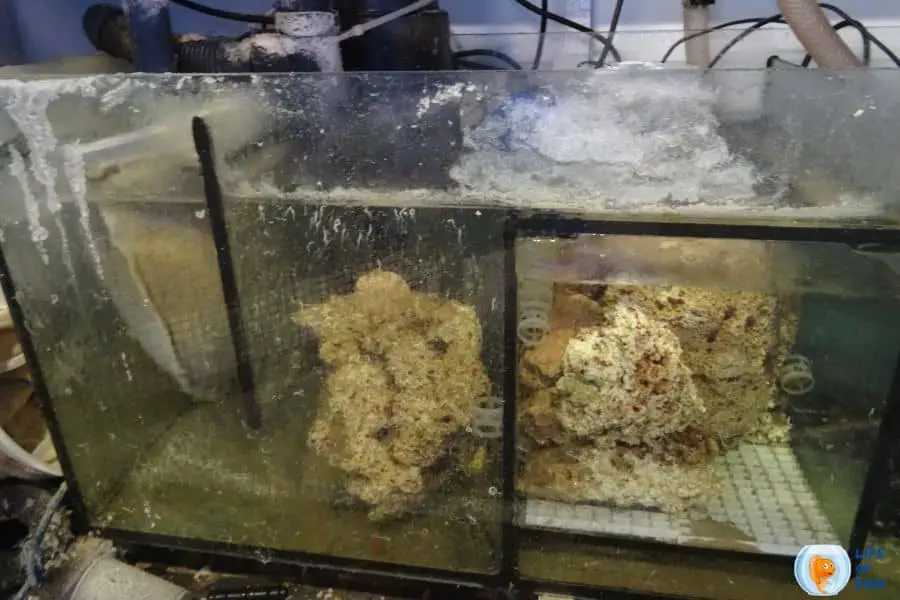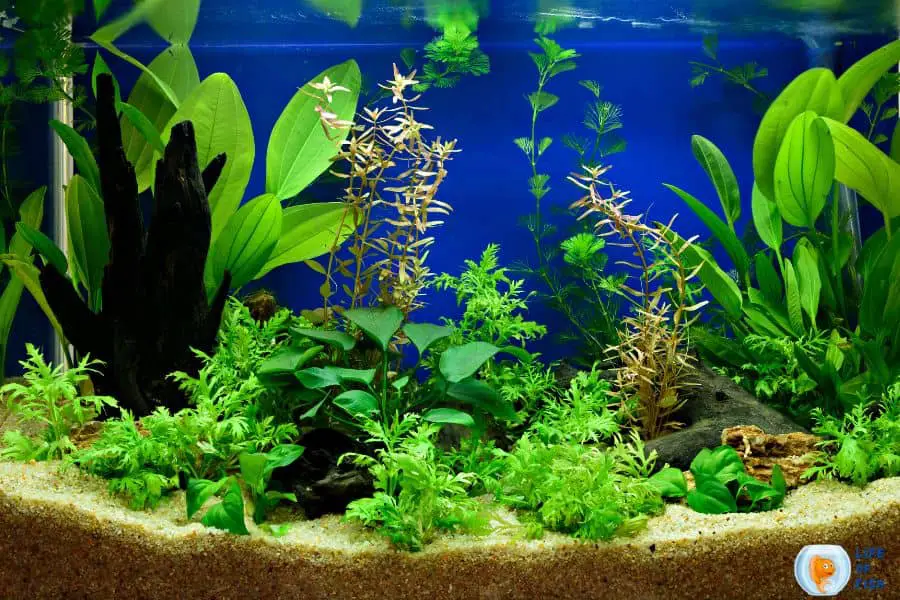Cleaning your aquarium is one of the most exhausting tasks of being a fish keeper. It’s even more tiring when you accidentally kill all the good bacteria in your filter while trying to clean it.
An aquarium filter is the primary source of good bacteria in your tank. These bacteria are responsible for breaking down the ammonia in your fish waste and making it safe for your fish to live.
So it is essential to clean your aquarium filter carefully. There are Ways To Clean Aquarium Filter Without Killing Bacteria, and we would like to share them with you. But first, let me explain what good bacteria are and how they help keep your fish healthy.

What Are Beneficial Bacteria?
Jump To
Beneficial bacteria are microscopic organisms that live in your aquarium filter. They are helpful because they break down the ammonia in your fish waste and make it safe for your fish to live.
Beneficial bacteria come in two varieties: Nitrosomonas and Nitrobacter, both of which are essential to the nitrogen cycle.
The Nitrosomonas species help to convert ammonia into nitrites. Nitrites are still toxic to fish but not as much as ammonia and in smaller concentrations.
The nitrites begin to build up as the fish excrete more waste and uneaten food decays. If the nitrites reach high enough levels, they will also cause:
- Lethargy
- Inflamed gills
- Algae blooms
- Swollen eyes
- Possible death
The Nitrobacter species help to convert the nitrites into nitrates. Nitrates are much less toxic to fish and can even be beneficial in small concentrations as they help promote plant growth. However, if the nitrates build up too high, they can cause:
- Algae blooms
- Slower growth rates
Goldfish are especially susceptible to high levels of nitrates and can develop a condition known as “golden slime disease.”
This disease is not often fatal and causes the fish’s body to produce a thick mucous that clogs their gills and prevents them from breathing.
Freshwater shrimp are also very sensitive to high levels of nitrates and can quickly die if exposed. The best way to avoid ammonia, nitrite, and nitrate poisoning is to do regular water changes while keeping beneficial bacteria in your aquarium filter.
What Kills Beneficial Bacteria In Aquarium?
There are a few things that can kill the beneficial bacteria in your aquarium:
Chlorine and chloramine – These chemicals are added to municipal water supplies to kill bacteria. They will also destroy the beneficial bacteria in your aquarium.
To remove chlorine and chloramine from your tap water, you will need to use a water conditioner that is specifically designed for this purpose.
You can also let the water sit out in an open container for 24 hours before adding it to your tank. This will allow the chlorine and chloramine to evaporate out of the water.
Hot water – Hot water can also kill the beneficial bacteria in your aquarium. Be sure to let the water cool to room temperature before adding it to your tank.
Cold water – Cold water will not kill the beneficial bacteria but can stress them and cause them to go into hibernation. It is best to avoid using cold water when adding it to your aquarium.
Bleach – Bleach will kill all bacteria, both good and bad. You should never use it in your aquarium.

How Often Should I Clean My Aquarium Filter?
While cleaning an aquarium is essential every two weeks, cleaning the aquarium filter often is not a good idea. A good rule of thumb is to clean the filter every 3-4 weeks or when it starts to flow less than usual.
Cleaning your aquarium filter too often will remove the beneficial bacteria that help keep your fish healthy. It can also cause ammonia and nitrite spikes, which can harm your fish.
Ways To Clean Aquarium Filter Without Killing Bacteria?
You can not clean your aquarium filter just like cleaning other things in your house. The beneficial bacteria that live in your filter need to be kept alive so that they can continue to do their job of breaking down the ammonia and nitrites in your tank.
You must follow the procedure below to clean your aquarium filter without killing the beneficial bacteria.
Fill A Bucket Of Water From Your Aquarium
Before doing any cleaning, you should fill a bucket with water from the aquarium. This water should be used to rinse the filter media and should be at the same temperature as the aquarium water.
Disassemble And Clean Filter Pads, Wool, And Floss
The next step is to remove the filter pads, wool, and floss from the filter and rinse them in the bucket of aquarium water. Be sure to squeeze out as much water as possible from the pads and wool before putting them back in the filter.
You can also put the pads and wool in a mesh bag and swish them around in some old tank water to clean them. You don’t have to be gentle with them as they can take a lot of abuse.
Disessemble And Clean Filter Sponges
The next part of the filter to clean is the sponge. Remove the sponge from the filter and rinse it in the bucket of aquarium water. Usually, the sponge is the part that contains the most beneficial bacteria, so be sure not to clean it too vigorously.
However, it will need several attempts of squeezing to remove the debris and uneaten food particles from the sponge.
Reassemble The Filter
After you’ve cleaned all of the filter’s components, it’s time to reassemble it. Be sure to put the filter media correctly so that the water flows through the filter correctly.
Important: You should not leave any part of your filter in thin air as it will cause the beneficial bacteria to die. A few minutes of being out of water is okay, but any longer than that will kill them.
Turn On The Filter And Add Some Water
After you have finished cleaning the filter, it is time to add some water back into the aquarium. You can add some freshwater or some water from an established aquarium. Make sure you add some water to completely cover the filter media.
Now turn on the filter and let it run for a few hours to ensure everything is working correctly.
Important: Do Not Clean Biological Filter Media Unless It Is Essential
Biological filter media exists to provide a home for beneficial bacteria. These bacteria are what keep your aquarium water clean and safe for your fish.
Cleaning this media too often will remove the beneficial bacteria and can cause your aquarium to cycle again.
If you need to clean this media, carefully rinse it in old aquarium water and squeeze out water as much as you can before reintroducing it to the filter.
Once the filter media is removed, you can rinse it in the bucket of aquarium water. You should use a gentle stream of water and avoid using any soap or detergent as this can kill the beneficial bacteria.
If you are using a biological filter, such as live rock or live sand, you should not clean it unless it is absolutely necessary. These filters are home to beneficial bacteria, and cleaning them will remove them.
While cleaning ANY biological filter media, please DO NOT use anything that kills beneficial bacteria (we have mentioned those above). Using brushes or sponges to clean biological media is not recommended as well.
What If Things Go Wrong?
Although you follow the instructions above, you may sometimes kill some beneficial bacteria by mistake. If that happens, do not worry too much, as there are things around the house that can help replenish the population of beneficial bacteria.
Tips To Keep Beneficial Bacteria In Your Aquarium
If you suspect that beneficial bacteria are harmed during the filter cleaning process, there are some tips to bring back the population:
Use an old aquarium filter.
You can get an established filter from a friend’s aquarium and use it in your tank. This will quickly add beneficial bacteria back into your aquarium.
Keep 2 Filters In Your Aquarium
Experts recommend keeping an additional filter in your aquarium. This way, you can take one filter out to clean it while the other one is still running. This ensures that there is always a filter running in your aquarium and that beneficial bacteria are not harmed.
Use a Bacteria Supplement
Many products on the market can help replenish the population of beneficial bacteria in your aquarium. Read the labels of these products carefully and follow the instructions before using any of these products.
Do a Fishless Cycle
If you are starting a new aquarium, you can do a fishless cycle to establish the population of beneficial bacteria.
This is a process where you add ammonia to the aquarium water to simulate the waste produced by fish.
Bacteria will grow in the aquarium and quickly establish a population that can break down ammonia. Once the ammonia is gone, you can add fish to the aquarium.
Do Not Remove and Clean Gravel, Decorations, And Other Equipment When Cleaning The Filter
Some people make the mistake of removing and cleaning everything from the aquarium when cleaning the filter. This is unnecessary and may even harm good bacteria.
When you remove and clean gravel and decorations, you also eliminate the bacteria that live on them. This can disrupt the population of beneficial bacteria in your aquarium.
It is best to leave everything in the aquarium when cleaning the filter. If you need to remove something, be sure to rinse it off in old aquarium water before putting it back in the aquarium.
Conclusion
Cleaning an aquarium filter is a necessary part of maintaining a healthy aquarium. However, it is essential to be careful when cleaning the filter so that you do not kill the good bacteria that live in the aquarium.
If you follow the instructions and tips above, you can clean your aquarium filter without harming the beneficial bacteria in your tank.
Read Next : How Long To Keep Fish In A Hospital Tank
